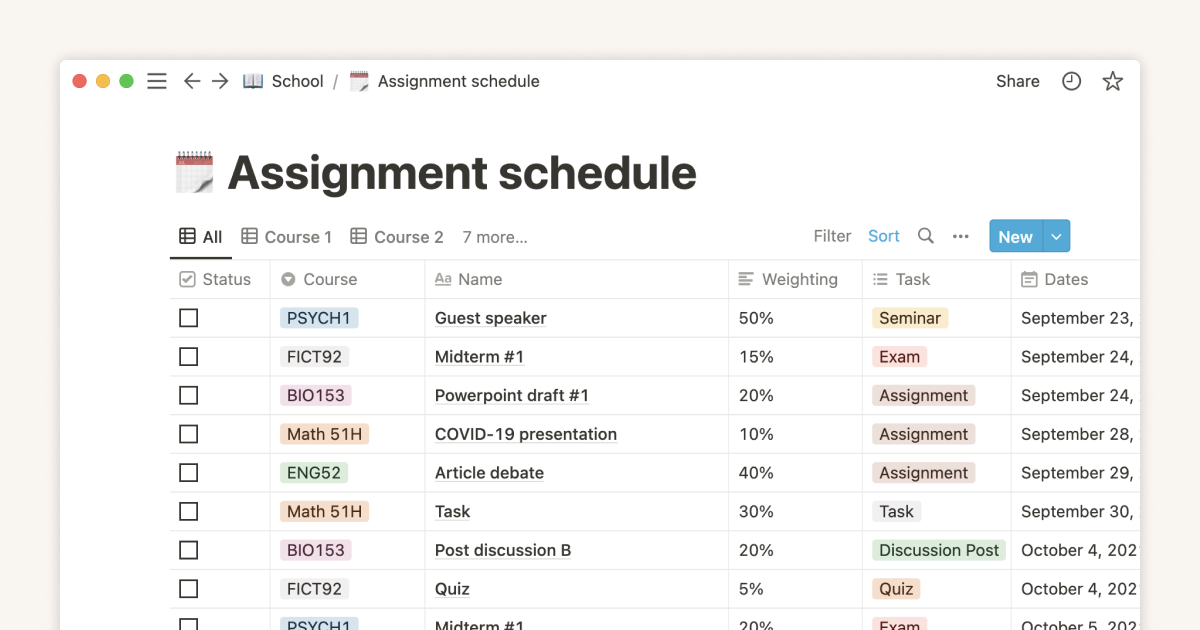Raking in over $100 billion in revenue per year — with projections to hit $200 billion by 2025 — the online education industry is redefining how people learn and teach in the 21st century.
As students adapt and upskill through dozens of online learning portals, more professionals, entrepreneurs, and companies are eyeing this opportunity to share their knowledge, build their brands, and market their skills.
Since its release in 2020, Maven has become a market leader in cohort-based courses (programs where a group — or cohort — of students progress through the material together). Many instructors are choosing to open an online course and take advantage of this site’s visibility, resources, and student pool.
If you’re curious about Maven but aren’t sure where to start, we have you covered. With the help of Maven templates, first-time users can stay on top of their goals and deliver an exceptional e-learning experience.
What’s a Maven project, and what’s Maven used for?
Maven is a “software as a service” (SaaS) platform that connects students and instructors from around the world via digital, cohort-driven courses. Eager online learners have the opportunity to explore dozens of topics — including artificial intelligence, product management, and investing — all taught in a community-focused format with webinars and live streams.
Udemy co-founder Gagan Biyani and AltMBA co-creator Wes Kao launched Maven in 2020, and it has a user base of over 25,000 people (at the time of writing). Maven continues to attract instructors from prestigious universities, government agencies, and companies as large as Amazon, Google, and Meta, cementing its reputation in the competitive online learning industry.
What are the benefits of using Maven?
Shortly following its launch, Maven attracted considerable attention from digital instructors for its intuitive interface, free tools, and community-driven approach to learning. Even teachers new to the online education field can have an easy time setting up a Maven account and getting acquainted with their dashboard.
Here are some more key benefits of using Maven:
Established platform with a large student base — Maven is one of the leading online platforms in the cohort learning space, and instructors can gain access to a growing community of more than 25,000 users simply by signing up for the service. With Maven’s impressive student pool and industry-leading reputation, new teachers don’t have to spend as much time searching for promising leads or scouting out an online community.
Landing page builder — Maven offers its proprietary marketplace and gives creators the tools to personalize their learning experience with a complimentary landing page builder. Maven leverages data from its most successful courses — as well as knowledge from a team of leaders in fields including marketing and online education — to help users create a high-conversion landing page.
Extensive resource library and private forum — Maven instructors have access to a private membership hub that connects users with fellow teachers to share tips, strategies, and information about the ins and outs of the platform. There’s also a comprehensive Maven repository full of pre-built worksheets, fill-in-the-blank pages, and how-to guides for creating and organizing course documents.
Online course accelerator — to get users off the ground running, Maven offers a free “Course Accelerator” boot camp to teach new sign-ups everything they need to know to make the most of Maven’s resources, design their first course, and develop conversion-making marketing strategies. As the capstone of this fast-track course, creators launch their pilot within three to four weeks.
Multiple tools to engage with students — Maven makes it easy to keep tabs on student activity and engage community members with email marketing campaigns, drip feeds, and surveys. There’s also a chat function on Maven, which makes it easy for instructors to review and respond to feedback on their latest course offerings.
3 Maven templates to make cohort project management easier
Although Maven has dozens of tools to help instructors build their first course, there are many moving parts to consider when starting out on the platform. One way to manage the workload when designing and implementing a Maven syllabus is to organize your efforts in one of Notion’s Maven templates.
Notion has several templates tailored to the needs of Maven creators. Let’s explore them in more detail.
1. Roadmap template

Set, assign, and track Maven milestones in one place using Notion’s roadmap template. With this tool, you or your team have a bird’s eye view of the project’s overall progress, as well as detailed notes on specific stages throughout course development and implementation.
The visual and shareable nature of this Maven roadmap makes it simple for team members to stay on the same page, highlight priorities, and collaborate throughout a project’s lifecycle. Thanks to the template’s visual organization, collaborators always know their daily work tasks, and project leaders have a simple way to monitor the development of their Maven course.
2. Go-to-market strategy doc template

The go-to-market strategy doc template can help your team answer key questions about their Maven course’s objectives to build a consistent and effective marketing strategy.
In addition to prompting you to clearly define your Maven product goals and competitive advantages, this template has extensive sections that encourage you to identify the audience’s background, interests, and expectations.
After compiling a detailed summary of your key offerings and student niche, you can create a detailed strategy for achieving organic traffic through targeted touchpoints, triggers, and rewards. At the bottom of the template, you can put your tactics and channels in the “Bets” section along with their projected resource allocation, priority, and impact on your project goals. To make each bet easier to manage, break them down into smaller tasks, each with no more than a weeklong time horizon.
3. Product requirements doc template

In the product requirements doc template, you can set strict parameters for your Maven project by clearly defining its problem statement, product specifications, and measurable goals and milestones.
This template is beneficial for defining a Maven course’s scope from the start — which can empower you to avoid allocating excessive time, energy, or resources. By separating the necessities from “nice-to-haves,” team leaders have a reference point to spot scope creep and stop it from spreading into their Maven project development.
Create a Maven project that stands out
Online education is a booming industry — which means there’s no shortage of competition. To attract students, your offerings must stand out among a sea of excellent courses.
Ace your Maven project and create a high-quality learning opportunity with the help of Notion’s pre-designed templates. We offer multiple tools to brainstorm ideas for your course, organize your syllabus, and track the progress of your project in real time. Consider adding tools like a Notion timeline for further visibility throughout your Maven project development.





